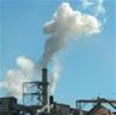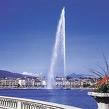|
|
 |
|
 |
Paris, França - Symbolic blackout in
defense of the planet, at 02.01.2007
|
|
Concentrations of CO2 in
the atmosphere were not so high 650 years ago
|
In February 2nd., 2007, through the Intergovernmental Panel on Climate Change (IPCC), the UN divulged in Paris, France, a report elaborated for 2.500 scientists of 130 countries, where they disclose that the global heating is irreversible and “very probably” provoked for the human beings activities.
It stops backwards escapes of information, pressures and symbolic black-outs in some european cities , as in Paris, with Eiffel Tower in the center of the darkness, that was convoked on behalf of the planet, in February 1st., 2007.
According to the team of scientists, that includes american and european investigators, the level of the oceans went up 3,3 millimeters per year, between 1993 and 2006, and this ascent was faster 25% of what in any another period in the last 115 years, guarantees the investigators in the “Science”.
A summary of 15 pages of the document, whose content was negotiated word to word in the before days among the 500 scientists of the panel, was delivered to the most important world-wide politicians. And what is there does not leave any doubt margin. Almost absolute certainty that the global heating (90%) has as root cause the human being action and the average increase of the globe temperature of the atmosphere between 1,8 and 4 degrees Celsius up to 2100 is two of the data that the IPCC announced that day.
In its last report, published in 2001, the group of connoisseurs had more uncertainties. It has six years, the scientists of the IPCC did not go beyond 50% of certainty on the human being cause of the global heating and its intervals of forecast on the increase of the atmospheric temperature for this century (1,4 and 5,8 degrees Celsius, as the scenes) so were not sharpened as now.
Until that day ,the alerts that came the public were credited to the fundamentalist ambientalists or the apocalyptic esoteric sects , and the the world-wide authorities did not position themselves effectively in adopting concrete measures for
its solution. Although it has had world-wide meetings to deal with the subject,
from 2nd. half of the passed century, little was obtained to diminish the CO2 emission
(carbon dioxide) in the atmosphere, substance that is this e main causer of the greenhouse effect.
It had diverse world-wide meetings until this date, to try to find a solution, having signature of protocols between the diverse nations that had made itselves present, being that many of the most developed, and, therefore more industrialized of dispatchers of that pollutant, had refused to sign, with distrust to harm its economy. The main ones had been:
 |
Toronto, Canada
CN Tower |
October, 1988, Toronto, Canada: "Toronto Conference on the Changing Atmosphere".
This was the first major international meeting bringing governments
and scientists together to discuss action on climate change. At this
conference, Industrialised countries' governments pledged to voluntar
ily cut CO2 emissions by 20% by the year 2005 (the so-called "Toronto Target"). This meeting was also critical in the establishment of the Intergovernmental Panel on Climate Change (IPCC), an international grouping of over 300 of the world's best climat e scientists charged with reviewing and reporting on the latest international science, impacts and change.
 |
Sundsvall, Sweden
|
August, 1990 , Sundsvall, Sweden: Release
of the IPCC's First Assessment Report. This report said 60 to 80% cuts
in CO2 emissions would
be needed to stabilise the concentration of this green house gas in
the atmosphere - already 25% higher than they were before industrialisation
started the intensive use of fossil fuels. The strong scientific concern
over the dangers of climate change in IPCC First Assessment Report
triggered the negotiation of the UN Framework Convention on Climate
Change.
 |
Geneva, Switzerland |
November,
1990, Geneva, Switzerland: Second World Climate Conference – The Ministerial Declaration converted the IPCC report into a major political push to negotiate a global response to the threat of climate change by calling for negotiations on a framework convention on climate change to begin without delay, and reaffirmed the wish that the convention "contain real commitments by the international community". This declaration reaffirm ed that "where there are threats of serious or irreversible damage, lack of full scientific certainty should not be used as a reason for postponing cost-effective measures to prevent such environmental degradation." And further agreed that the "ultimate global objective should be to stabilise greenhouse gas concentrations at a level that would prevent dangerous anthropogenic interference with climate".
 |
UN Headquarters in New York
|
December, 1990, UN, New York : UN General Assembly Resolution 45/212 established the Intergovernmental Negotiating Committee on a Framework Convention on Climate Change (INC) under the auspices of the General Assembly itself with a mandate to develop the convention, if possible by the time of the Earth Summit in June 1992 on December 21, 1990 Change (INC) under the auspices of the General Assembly itself with a mandate to develop the convention, if possible by the time of the Earth Summit in June 1992 on December 21, 1990 February 1991, Chantilly, Washington DC, USA. First Session of Intergovernmental Negotiating Committee on a Framework Convention on Climate Change, marred by diplomatic squabbling over official arrangements and outbreak of the Gulf War.
 |
UN peace symbol
|
May, 1991, UN New York: Final negotiations
concluded, in a late night session, on the UN Framework Convention
in Climate Change. As a first step, industrialised countries agreed
to bring their CO2 emissions
back to 1990 levels by the year 2000. To the disappointment of most
countries, under extreme pressure from the Bush Administration, the
emission commitments in the Convention were not legally-binding.
 |
Rio de Janeiro - Brazil
|
June 1992, Rio de Janeiro, Brazil: In a hail of self-congratulation, the Framework Convention on Climate Change (FCCC) was opened for Signature at the Rio Earth Summit. As at 20-July-98 th e Convention has been ratified by 175 countries and the European
 |
Polynesian
|
September, 1994: Alliance of Small Island States (AOSIS) submits a protocol proposal for adoption in Berlin in March 1995, calling for industrialized countries to reduce their emissions
of CO2 byt 20% from 1990 levels by the year 2005.
 |
Berlin, Germany
Brandenburg Gates |
March 1995, Berlin, Germany : The Berlin "Climate Summit." The first Ministerial level full meeting of the Convention, also known as the Conference of the Parties (COP 1), was held. The Berlin meeting found that the agreements of the Convention were too weak to meet the objective of protecting the planet from dangerous climate change, particularly as it said nothing about the post-2000 period. Parties agreed the "Berlin Mandate"-to negotiate a Protocol or o ther legal agreement by the time of the third Conference of Parties (COP3) containing specific "emissions limitations and reductions." The AOSIS protocol was included only as an element of negotiations.
 |
Geneva lake, at night
|
August, 1995, Geneva, Switzerland: First meeting of the Ad Hoc Group on the Berlin Mandate meets.The US deploy many go-slow tatics , calling for more study of the issue.
 |
Coliseus at night – Rome, Italy |
December 1995, Rome, Italy: The IPCC Second Assessment Report was published. Involving well over 2000 scientists and experts, the Report concluded that "The balance of evidence suggests a discernible human influence on global climate" - that is, we are already seeing the first signs of climate change.
 |
Clock of Flowers – Geneva- Switzerland |
July 1996, Geneva, Switzerland: The Second
Conference of Parties (COP2). Whilst making little progress on CO2 emission
reduction targets for a new Protocol, a major breakthrough occurred
when the US announced that it wanted the emission commitments in this
protocol to be legally binding. The US also signalled for the first
time that it wanted to include emission trading in any new agreement.
The vast majority of Ministers present at the meeting signed onto the "Geneva Declaration” which says : a) the new IPCC science provides the basis for “urgently strenghtening action”;b) the world faces "significant, often adverse impacts" from climate change;c)legally binding "significant overall reductions" in greenhouse gas emissions should be negotiated by the next Conference of Parties (COP 3).
 |
Brussels, Belgium , at night |
March 1997, Brussels, Belgium: European Union Environment Ministers adopt an emissions reduction target for the Kyoto negotiations of 15% by the year 2010. The EU proposal generated much diplomatic activity at the Sixth Session of the AGBM in Bonn and was attacked vigorously by the USA and Japan.
 |
Plenary Assembly of UN , New York |
July, 1997, UN, New York: Five years after the Rio Earth Summit at which the Climate Convention was adopted World leaders meets at a UN General Assembly Special Session to review progress on implementing the commitments made in 1992. With the world environment continuing to deteriorate there was a mood of pessimism over the meeting, with the only concrete progress on the horizon, the Kyoto Protocol negotiations. President Clinton sp oke to the General Assembly saying that " we will bring to the Kyoto conference in December a strong American commitment to realistic and binding limits that will significantly reduce our emissions of greenhouse gases”.
 |
The riverbank of Rhein, Bonn, Germany |
October, 1997, Bonn, Germany: U.S.A. announces its position for the negotiations of the Protocol of Kyoto, in the direction of a stabilization of gas emissions of greenhouse in the levels of 1990 up to a 2010 and reduction of 5% up to 2015. Japan complains for a nominal target of reduction of emission in 5% up to 2010 in three gases of greenhouse that could not be legally entailed. The complex structure of the proposal could not hide the fact of that, in optimum of the cases, it could lead to a stabilization of the emissions in the developed countries and therefore was never a serious negotiation tool.
 |
Tower of Kyoto, Japan |
December 1997, Kyoto, Japan: Kyoto Protocol negotiations conclude with the adoption of legally binding greenhouse gas emission targets for all industrialized countries. The Protocol also included provisions for emission trading between industrialized countries. The overall nominal effect of the Kyoto protocol is a reduction of 5.2% by 2010 against 1990 levels. However the agreement has many loopholes and could lead to emissions risin g above 1990 levels (Link to Section 1 of Greenpeace Analysis of the Kyoto Protocol).Under the protocol Japan must reduce by 6%, USA by 7%, and the European Union by 8%. Other countries are allowed to stabilize (New Zealand, Russia, Ukraine), or increase their emissions (Norway 1% and Australia 8%). (Link to bleTa 4 of Greenpeace Analysis of the Kyoto Protocol .
 |
The Rosy House, in Buenos Aires, Argentina |
November 1998, Buenos Aires, Argentina: Fourth Conference of the Parties to the Climate Convention. This meeting will be negotiating key issues left unresolved in the Kyoto Protocol neg otiations, including the Clean Development Mechanism, emissions trading, and technology transfer.
See More :
www.projeto-biologico.arizona.edu/.../09t2.gif
www.urbanext.uiuc.edu/gpe_sp/images_rev/air.gif
www.cricyt.edu.ar/.../images/dioxcarb.jpg
http://pt.wikipedia.org/wiki/Di%C3%B3xido_de_carbono
http://educar.sc.usp.br/licenciatura/2003/ee/Efeito_Estufa.html
http://noticias.pluc.com.br/showarticle.php?articleID=992
http://www.feiradeciencias.com.br/sala02/02_100.asp
www.juntadeandalucia.es/.../ver/09/fotosin.gif
www.somosamigosdelatierra.org/00_imagenes/inv...
www.corpohumano.hpg.ig.com.br/.../i_pulmones.jpg |